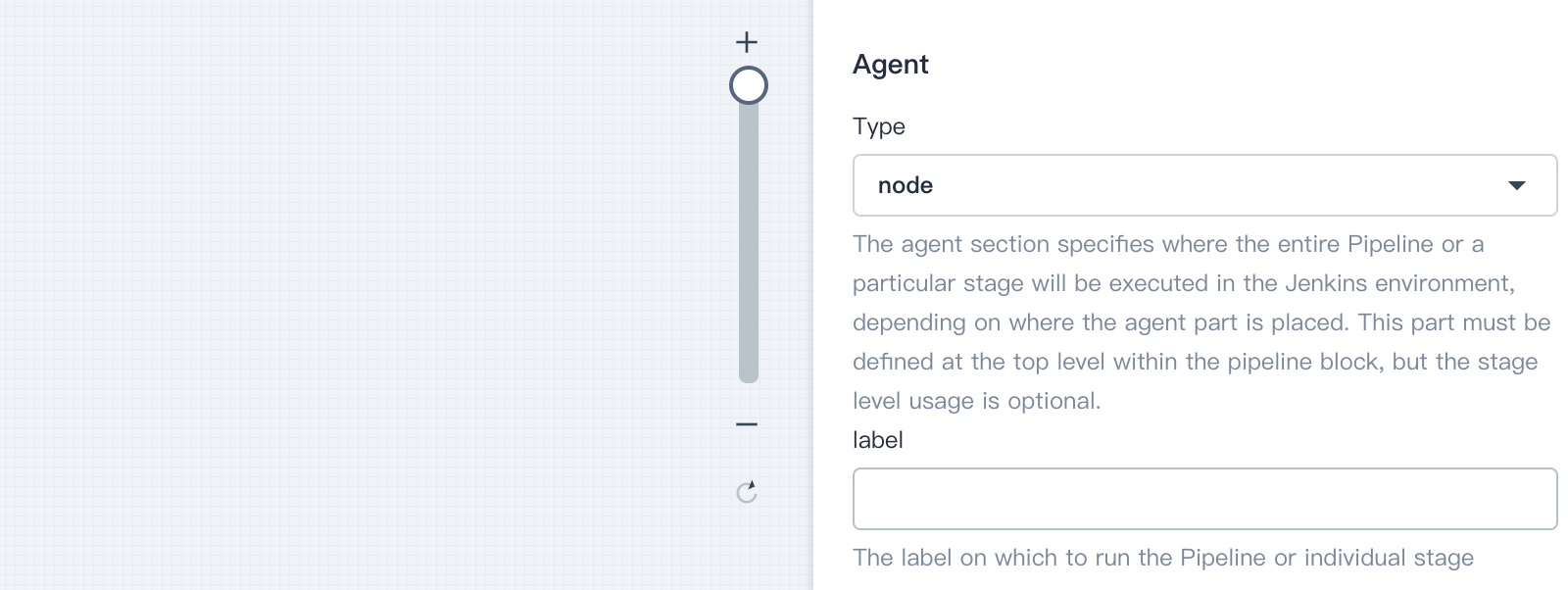Release Notes
Installation
Install on Linux
Install on Kubernetes
Pluggable Components
Upgrade
Third-Party Tools
Authentication Integration
Cluster Operations
Quick Start
DevOps
User Guide
Configration Center
Logging
Developer Guide
API Documentation
Troubleshooting
FAQ
Jenkins Agent
EditIntro
The agent section specifies where the entire Pipeline, or a specific stage, will execute in the Jenkins environment depending on where the agent section is placed. The section must be defined at the top-level inside the pipeline block, but stage-level usage is optional.
Built-in podTemplate
The podTemplate is a template of a pod that will be used to create agents, users can define a podTemplate to use in the kubernetes plugin.
When creating a pipeline, each Pod contains at least the jnlp container for Jenkins Master to communicate with the Jenkins Agent. In addition, users can add containers in the podTemplate to meet their own needs. Users can choose to use the form of their own Pod yaml to flexibly control the runtime, and the container can be switched by the container command.
pipeline {
agent {
kubernetes {
//cloud 'kubernetes'
label 'mypod'
yaml """
apiVersion: v1
kind: Pod
spec:
containers:
- name: maven
image: maven:3.3.9-jdk-8-alpine
command: ['cat']
tty: true
"""
}
}
stages {
stage('Run maven') {
steps {
container('maven') {
sh 'mvn -version'
}
}
}
}
}At the same time, in order to reduce the user's learning cost, we have built in some podTemplate, so that users can avoid writing yaml files.
In the current version we have built in 4 types of podTemplates, i.e. base, nodejs, maven, go, and provide an isolated Docker environment in the Pod.
You can use the built-in podTempalte by specifying the Agent's label. For example, to use the nodejs podTemplate, you can specify label as nodejs when creating the Pipeline, as shown in the example below.

pipeline {
agent {
node {
label 'nodejs'
}
}
stages {
stage('nodejs hello') {
steps {
container('nodejs') {
sh 'yarn -v'
sh 'node -v'
sh 'docker version'
sh 'docker images'
}
}
}
}
}podTemplate base
| Name | Type / Version |
|---|---|
| Jenkins Agent Label | base |
| Container Name | base |
| OS | centos-7 |
| Docker | 18.06.0 |
| Helm | 2.11.0 |
| Kubectl | Stable release |
| Built-in Softwares | unzip、which、make、wget、zip、bzip2、git |
podTemplate nodejs
| Name | Type / Version |
|---|---|
| Jenkins Agent Label | nodejs |
| Container Name | nodejs |
| OS | centos-7 |
| Node | 9.11.2 |
| Yarn | 1.3.2 |
| Docker | 18.06.0 |
| Helm | 2.11.0 |
| Kubectl | stable release |
| Built-in Softwares | unzip、which、make、wget、zip、bzip2、git |
podTemplate maven
| Name | Type / Version |
|---|---|
| Jenkins Agent Label | maven |
| Container Name | maven |
| OS | centos-7 |
| Jdk | openjdk-1.8.0 |
| Maven | 3.5.3 |
| Docker | 18.06.0 |
| Helm | 2.11.0 |
| Kubectl | stable release |
| Built-in Softwares | unzip、which、make、wget、zip、bzip2、git |
podTemplate go
| Name | Type / Version |
|---|---|
| Jenkins Agent Label | go |
| Container Name | go |
| OS | centos-7 |
| Go | 1.11 |
| GOPATH | /home/jenkins/go |
| GOROOT | /usr/local/go |
| Docker | 18.06.0 |
| Helm | 2.11.0 |
| Kubectl | stable release |
| Built-in Softwares | unzip、which、make、wget、zip、bzip2、git |